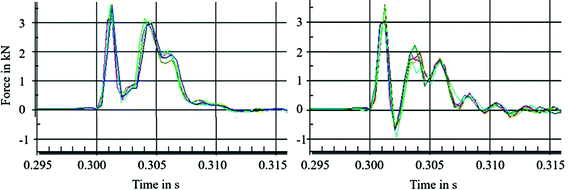
Note:For an expanded version of this table showing more loads, including British, European, wildcat, obsolescent American and proprietary calibers, see the Expanded Rifle Trajectory Table.

#Hawls rifle recoil table manuals
The following data was taken from various sources including reloading manuals and the online Ballistics Calculator provided by BigGameInfo.

For the record, this table was calculated for an air temperature of 60 degrees F and an altitude of 1000 feet. While environmental factors such as altitude and ambient air temperature affect trajectory, their effect is relatively minor. All trajectory figures are rounded off to one decimal place. If your scope is not 1.5 inches over the bore, and most scopes with oversize objectives require higher mounts, your trajectory will vary from those given below. All trajectories were calculated for a rifle with a low mounted telescopic sight of moderate size whose line of sight is 1.5 inches above the bore axis of the barrel. Most of the loads below are similar to popular factory loads for the selected cartridges. Thus between the muzzle and the distance given as the MPBR, the bullet never strays more than 3 inches above or below the line of sight (1.5 inches for varmint loads). The Maximum Point Blank Range (MPBR), which is shown in the last column of the table below, is the distance at which the bullet falls 3 inches below the line of sight. A 3 inch MRT also allows for a little bit of human error, which is probably a good thing when shooting in the field. More mid-range rise can be accepted when hunting larger animals (a 4 inch MRT might be appropriate when hunting mule deer, for example), but if a mixed bag hunt for larger and smaller species is envisioned, then the 3 inch rise used for this table is probably safer. Allowing a greater mid-range trajectory might result in shooting over an animal at an intermediate distance.Ī maximum rise of 3 inches is appropriate for hunting the smaller species of big game, creatures from perhaps 75 pounds to 150 pounds on the hoof, which typically have a kill zone of about 8 inches from top to bottom. In the table below I used the term "mid-range trajectory," abbreviated "MRT."Ī maximum bullet rise of 1.5 inches is appropriate for shooting small animals, as they present a small target, particularly if head shots are necessary. In ballistics catalogs the point of maximum bullet rise is often called the mid-range trajectory, or sometimes the maximum ordinate. The trajectories in the table below were calculated for a maximum bullet rise of 1.5 inches above the line of sight for all small game and varmint loads, and three inches above the line of sight for all big game loads. (It may well vary.) This trajectory table can also serve as a comparative tool, allowing the reader to compare the trajectories of different cartridges or loads. So after sighting-in, always check your individual rifle at various ranges to see how close its trajectory comes to the published data. Of course, no trajectory table can possibly cover all loads for all calibers in all rifles.
#Hawls rifle recoil table trial
Used as such it can save a lot of trial and error experimentation. The table below is designed to serve as a starting point from which a shooter can work.

Of course, the actual distance the bullet should hit above the point of aim at 100 yards (or 100 meters, which is about 108 yards) varies with the individual caliber and load.
This system maximizes the distance in which no "hold over" is necessary. Sighting-in a hunting rifle to hit a certain number of inches high at 100 yards (or 100 meters) maximizes the point blank range of the rifle and cartridge and is superior to zeroing at a fixed distance like 200 yards. In order to hit a distant target a rifle must be correctly sighted-in, and to accomplish that the shooter must have some working knowledge of the bullet's trajectory.


 0 kommentar(er)
0 kommentar(er)
